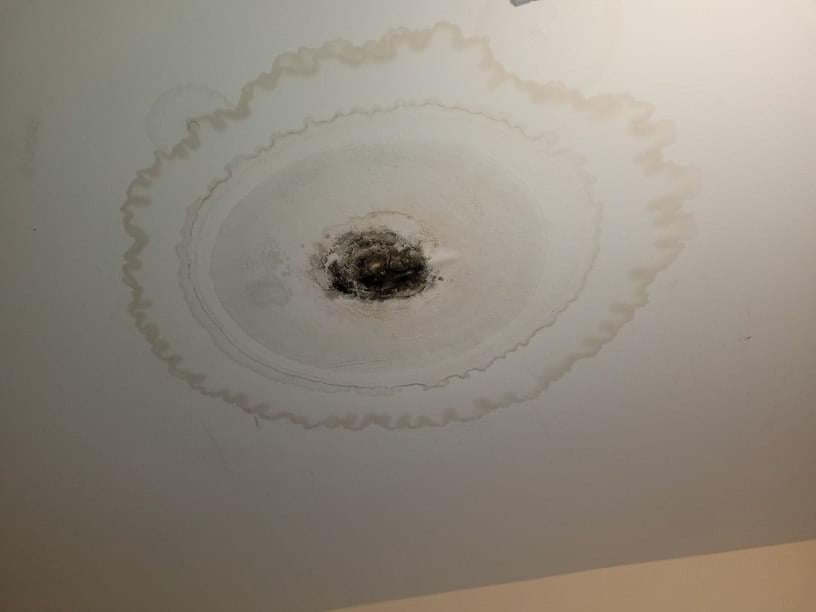Uncovering Concealed Water Line Leaks: 6 Smart Detection Methods
Uncovering Concealed Water Line Leaks: 6 Smart Detection Methods
Blog Article
Here down the page you can discover lots of exceptional answers when it comes to Finding hidden leaks.

Early detection of dripping water lines can reduce a prospective disaster. In addition to saving you cash, it will lessen the worry and frustration. The minute you locate a leak, calling your plumber for repair services is the best solution. Nevertheless, some small water leaks might not show up. Right here are some hacks that help if you can not discover it with your naked eyes.
1. Analyze the Water Meter
Every residence has a water meter. Inspecting it is a proven manner in which helps you find leaks. For starters, shut off all the water resources. Guarantee no person will purge, utilize the faucet, shower, run the washing device or dishwashing machine. From there, go to the meter and watch if it will alter. Considering that no person is using it, there ought to be no activities. If it relocates, that indicates a fast-moving leak. If you spot no modifications, wait an hour or 2 and examine back once again. This indicates you may have a slow leakage that can even be below ground.
2. Check Water Usage
Examine your water expenses and track your water usage. As the one paying it, you need to see if there are any disparities. If you identify sudden changes, in spite of your consumption being the same, it implies that you have leakages in your plumbing system. Remember, your water expense should fall under the very same variety monthly. An unexpected spike in your bill shows a fast-moving leakage.
A constant rise every month, also with the exact same routines, shows you have a sluggish leak that's additionally slowly rising. Call a plumber to extensively check your residential or commercial property, particularly if you really feel a cozy location on your floor with piping beneath.
3. Do a Food Coloring Test
When it comes to water consumption, 30% comes from commodes. If the shade somehow infiltrates your dish throughout that time without flushing, there's a leak in between the tank and dish.
4. Asses Exterior Lines
Do not forget to inspect your outdoor water lines also. Should water leak out of the link, you have a loose rubber gasket. One little leak can throw away tons of water and also spike your water expense.
5. Evaluate the circumstance as well as check
Homeowners ought to make it a routine to inspect under the sink counters as well as also inside cupboards for any type of bad odor or mold growth. These two warnings show a leakage so prompt attention is required. Doing regular inspections, also bi-annually, can conserve you from a major trouble.
Inspect for stainings and compromising as a lot of devices and pipelines have a life expectations. If you presume leaking water lines in your plumbing system, don't wait for it to escalate.
Early detection of dripping water lines can alleviate a potential calamity. Some little water leakages may not be noticeable. Inspecting it is a surefire method that assists you uncover leaks. One small leakage can squander lots of water and also increase your water costs.
If you think dripping water lines in your plumbing system, do not wait for it to intensify.
WARNING SIGNS OF WATER LEAKAGE BEHIND THE WALL
PERSISTENT MUSTY ODORS
As water slowly drips from a leaky pipe inside the wall, flooring and sheetrock stay damp and develop an odor similar to wet cardboard. It generates a musty smell that can help you find hidden leaks.
MOLD IN UNUSUAL AREAS
Mold usually grows in wet areas like kitchens, baths and laundry rooms. If you spot the stuff on walls or baseboards in other rooms of the house, it’s a good indicator of undetected water leaks.
STAINS THAT GROW
When mold thrives around a leaky pipe, it sometimes takes hold on the inside surface of the affected wall. A growing stain on otherwise clean sheetrock is often your sign of a hidden plumbing problem.
PEELING OR BUBBLING WALLPAPER / PAINT
This clue is easy to miss in rooms that don’t get much use. When you see wallpaper separating along seams or paint bubbling or flaking off the wall, blame sheetrock that stays wet because of an undetected leak.
BUCKLED CEILINGS AND STAINED FLOORS
If ceilings or floors in bathrooms, kitchens or laundry areas develop structural problems, don’t rule out constant damp inside the walls. Wet sheetrock can affect adjacent framing, flooring and ceilings.
https://www.servicemasterbyzaba.com/blog/how-to-detect-water-leakage-in-walls/

As an enthusiastic person who reads on Detecting hidden plumbing leaks, I was thinking sharing that piece of content was really helpful. Enjoyed reading our posting? Please share it. Let another person discover it. I am grateful for your time. Don't forget to come by our website back soon.
Water trouble? Dial. Report this page